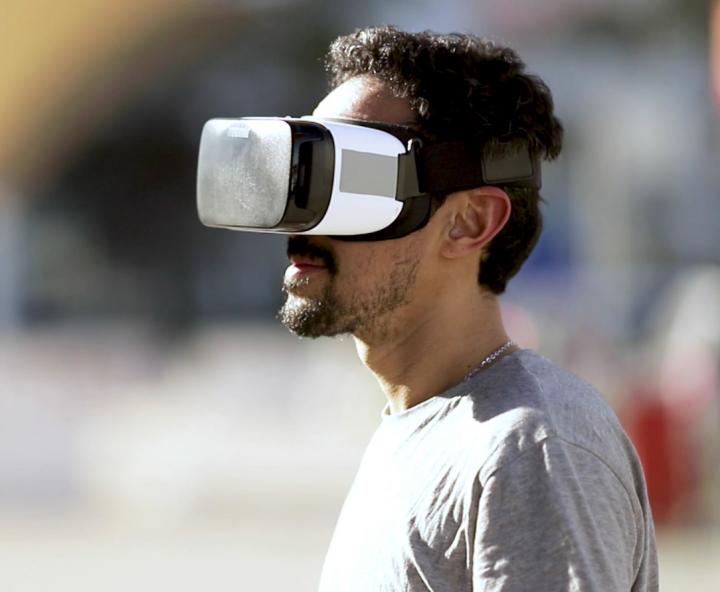Virtual reality leads to more consistent verdicts

Credit: University of South Australia
As any juror will tell you, piecing together a crime from a series of documents tendered in a courtroom is no easy feat, especially when a person’s future hangs in the balance.
Delivering the correct verdict on car accident and murder cases is contingent on good spatial awareness, but short of being at the scene of the crime, the room for error is large.
However, thanks to the advent of virtual reality (VR), jurors now have a better chance of making the right decision.
A new study published by the University of South Australia provides overwhelming evidence in favour of using VR in the courtroom, effectively dropping jurors right in the middle of a car accident or murder scene.
A team of UniSA researchers, legal professionals, police and forensic scientists simulated a hit-and-run scene, reconstructing the events with a laser scanner to compare verdicts between ‘jurors’ using 3D headsets and those relying on photographs from the scene.
The result? Better recall, spatial accuracy and more consistent verdicts in the case of the jurors (30 study participants) using interactive technology.
“Virtual reality also required significantly less effort than using photographs to piece together the sequence of events,” says Dr Andrew Cunningham, from UniSA’s Australian Research Centre for Interactive and Virtual Environments.
Study participants viewing the scene through a 3D headset were 9.5 times more likely (86.67 per cent) to choose the same verdict – Death by Dangerous Driving – than the group who relied on photographs, who were split 47/53 per cent between a careless driving verdict and dangerous driving verdict.
“Participants who were immersed in the scene were more likely to correctly remember the location of the car in relation to the victim at the time of the accident, whereas it was difficult for people to visualise the scene from still images.
“This provides unequivocal evidence that interactive technology leads to fairer and more consistent verdicts, and indeed could be the future of courtrooms,” Dr Cunningham says.
Lead researcher Dr Carolin Reichherzer says site visits are still the gold standard in providing juries with a realistic impression of a scene, but they also have their drawbacks.
“They are expensive – especially in remote locations – and in some cases the site itself has changed, making accurate viewings impossible,” Dr Reichherzer says.
Virtual reality has precedence in the court room internationally, with the most famous example in 2019 when the Bavarian State criminal office created an interactive scene of the infamous Auschwitz concentration camp to aid the prosecution’s case in a war crimes trial.
A video supplementing this press release is available at https:/
###
Notes for editors
“Bringing the jury to the scene of the crime: memory and decision-making in a simulated crime scene” was rated among the top 5 per cent of papers presented at the 2021 CHI: Conference on Human Factors in Computer Systems, held in Japan in May. The conference is considered the most prestigious in the field of human-computer interaction.
For a copy of the paper please contact [email protected]
The study was led by UniSA PhD candidate Carolin Reichherzer who has now graduated and is working in Switzerland. UniSA researchers involved in the study included Dr Andrew Cunningham, Professor Bruce Thomas, Professor Mark Billinghurst, Tracey Coleman and Ruochen Cao. University of Adelaide academics and forensic scientists from the Institute of Environmental Science in Auckland also took part in the study.
Media Contact
Candy Gibson
[email protected]
Original Source
https:/
Related Journal Article
http://dx.




